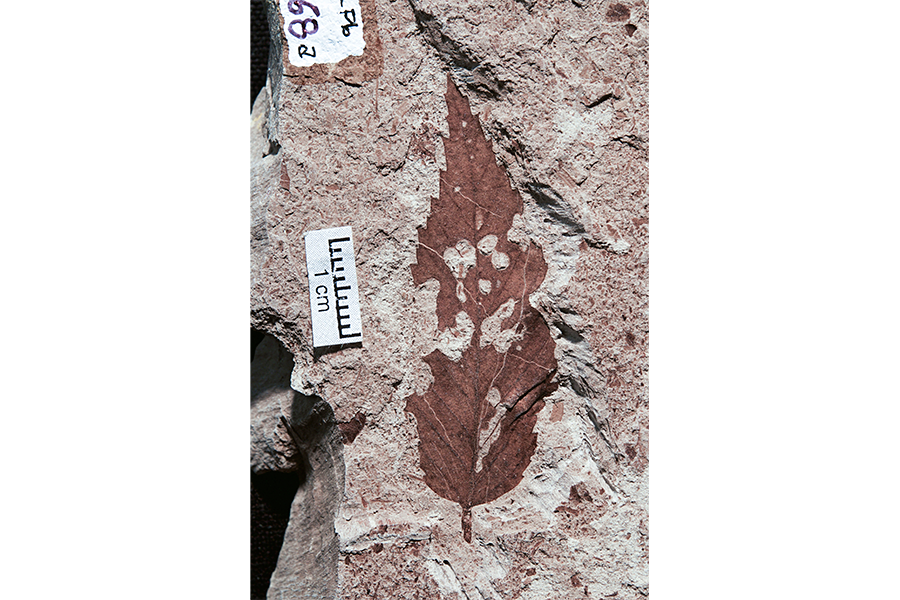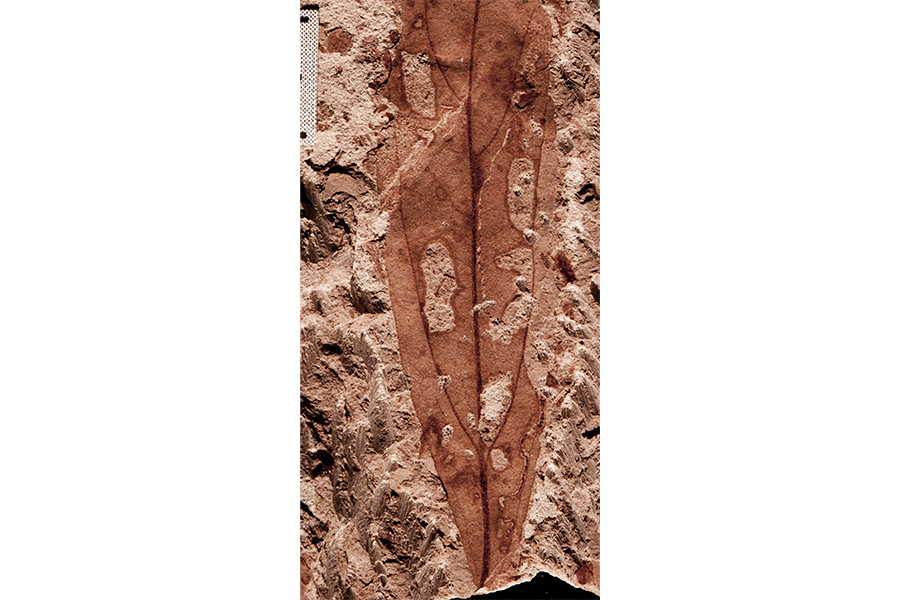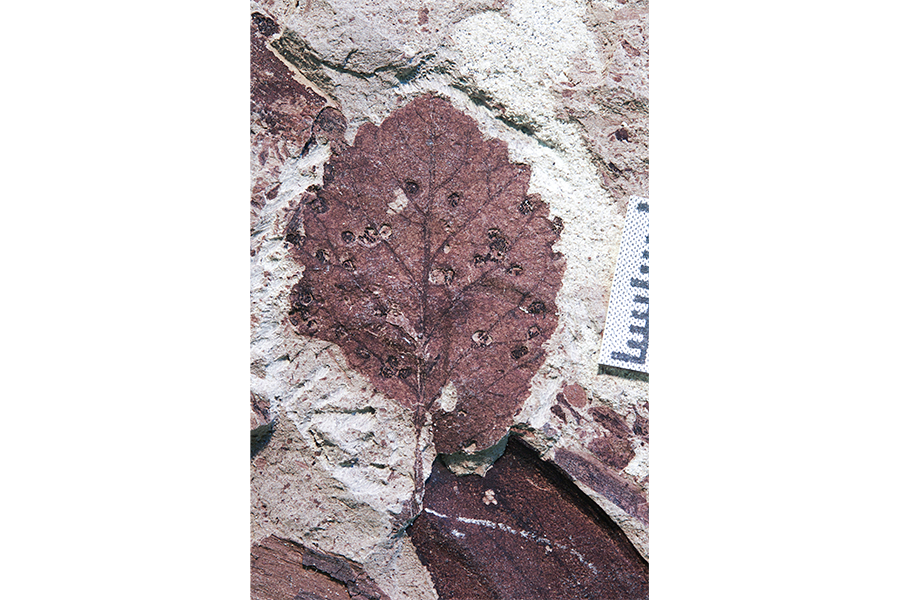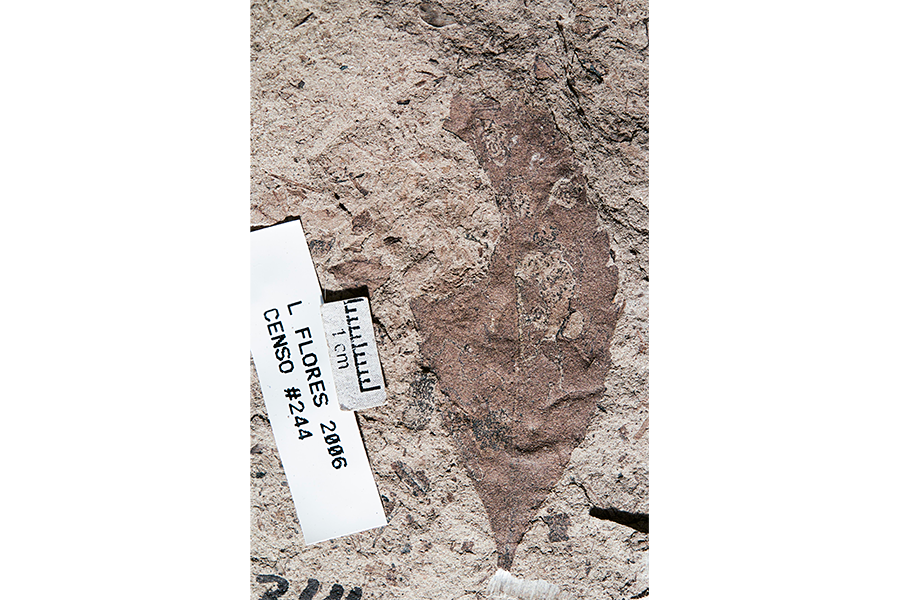Was South America a refuge during the dino-killing mass extinction?
Loading...
Much of what scientists know about the mass extinction that killed perhaps as much as three-quarters of life on Earth, including the non-avian dinosaurs, comes from fossils unearthed in the western interior of North America. Fossils from other parts of the world at that time have been more scarce.
Scientists had speculated that perhaps regions of the Southern Hemisphere, like South America, had been a sort of refuge for species during the Cretaceous-Palaeogene (K-Pg) extinction event, and then those organisms went on to repopulate the globe.
But that actually might not be the case, a team of paleontologists suggest in a paper published Monday in the journal Nature Ecology & Evolution.
In South America, "there was an extinction at the same time as there was an extinction in North America," study lead author Michael Donovan, a PhD student at Pennsylvania State University, tells The Christian Science Monitor in a phone interview.
But that doesn't mean the mass extinction had the same effect in both regions. Mr. Donovan's research suggests that life in South America may have recovered in less than half the time it took in North America.
The fossils Donovan and his colleagues studied were not the bones of ancient animals, they were leaves.
"Plants deserve just as much attention as the major dinosaur finds," Regan Dunn, a paleobotanist at the Field Museum of Natural History in Chicago who was not part of the research, says in a phone interview with the Monitor. "They can tell us so much more than a single dinosaur fossil can tell us about ancient environments."
These leaves weren't just dead plant matter, though. Donovan and his colleagues studied fossilized leaves that had been nibbled on or burrowed into by insects. And, because plant-eating insects are specialized in which plants they eat and the damage they cause, studying these fossilized plant-insect associations can tell the scientists about the diversity of both plants and insects alive at the time.
"There aren't many insect body fossils," Donovan explains. "So we can use insect damage on fossil leaves as a sort of proxy for the diversity of plant-eating insects that were around."
The team studied fossils from about 67 million years ago, just before the extinction event, and the insects apparently were voracious then. These leaves show a wide variety of insect-caused damage. But 65-million-year-old fossils showed the diversity of these bite marks had plummeted by about 21 percent right after the mass extinction swept the planet some 66 million years ago.
Donovan also examined fossils from 64 million years ago and 62 million years ago, and found that the diversity of insect damage was back up to its pre-extinction levels in the most recent fossils – just 4 million years after the mass extinction event.
Four million years may seem like a long time, but in the western interior of North America recovery took about 9 million years.
Perhaps the ecosystem in what is now Argentina was such that organisms were less affected by the mass extinction.
Or, Donovan suggests, perhaps this different recovery rate has something to do with the distance from the Chicxulub crater in Mexico. That's because most scientists agree that the mass extinction was likely triggered by an asteroid slamming into what is today the Yucatán Peninsula. The impact of that event may have been less severe in the southern tip of South America simply because it was farther away.
"A lot of times when we think about mass extinctions or we think about these very abrupt events, we think about a global response," Daniel Peppe, a paleontologist at Baylor University in Waco, Texas, who was not part of the research, says in a phone interview with the Monitor. "I think it gets oversimplified in that you think the response is the same everywhere. And this is really showing that it's not."
It's important to understand the nuances of how ecosystems have recovered from mass extinctions in the past, Dr. Peppe says, especially because scientists think we're in the midst of the Earth's sixth mass extinction right now.
Given that there has been little material to study from the southern hemisphere across the K-Pg boundary, Stephen McLoughlin, a paleobiologist at the Swedish Museum of Natural History who was not part of the study, writes in an email to the Monitor, this study "makes a useful advance in our understanding of the evolution of biotic interactions through major Earth crises."
Studying the fossilized interactions between plants and insects can yield crucial insights into major ecosystem changes in a few ways.
"[Plant-insect associations] represent the most abundant and diverse groups of terrestrial organisms," Torsten Wappler, a paleontologist at the Steinmann Institute at the University of Bonn who was not involved in the research, writes in an email to the Monitor. "As such they have by far the most complete and diverse fossil record of terrestrial organisms for this period of time."
And, Dr. Wappler says, not only do these fossils provide insight into the organisms themselves, "To look at the herbivory pattern could provide deep insights in fossil ecosystem and food web structures that were not possible when only look at them individually."
Plants and insects are integral parts of food webs, Dr. Dunn says. Many animals eat them, they help degrade organic material, and insects are key pollinators. As such, studying them is a good way to study the overall ecosystem, she says. "You could say that insects are kind of a harbinger of what was going on ... If you have some major change going on in the insects, it's a pretty good sign that there's something going on in the whole ecosystem."











